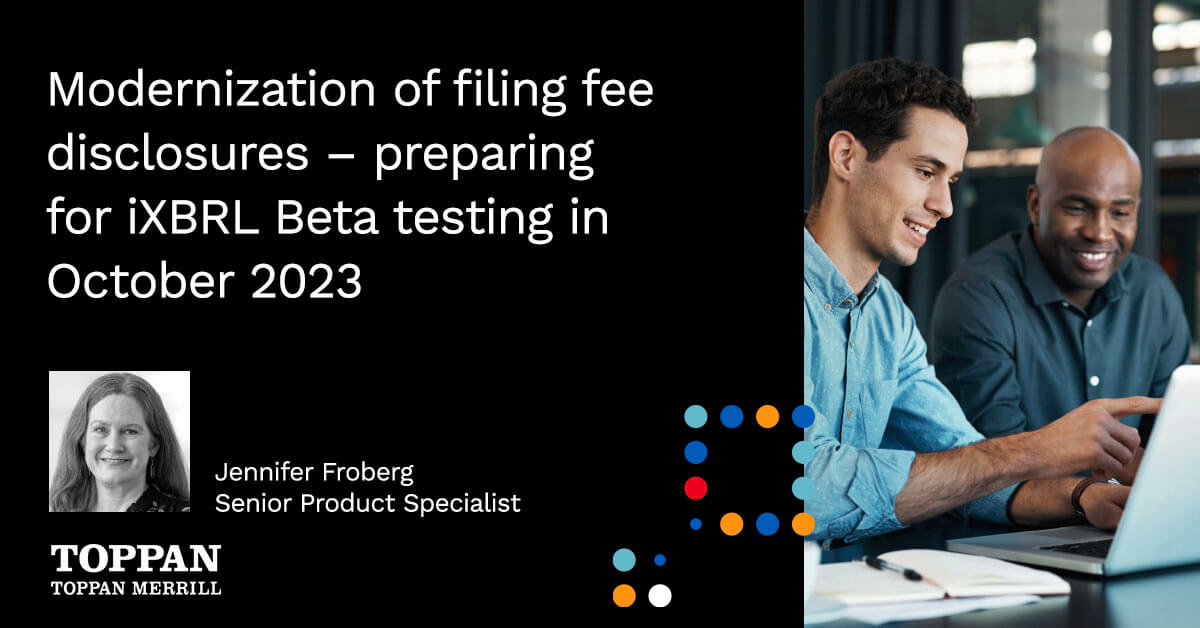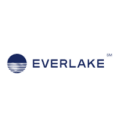Seize the opportunity – let us handle the documents.
When conducting M&A, speed, security and accuracy are paramount. You either move at the speed of the markets – or you get left behind.
It’s not just every second that counts – it’s every clause, every footnote, every decimal point and every deadline.
Toppan Merrill offers a comprehensive suite of services that ensure a successful M&A process from beginning to end. From due diligence to regulatory filings and shareholder communications, we support you with an end-to-end solution suite for document preparation, filing, printing and distribution. And support from a global team of specialists, on-call 24/7, who know every form type, filing standard and deadline inside-out.
No one else offers a more efficient and comprehensive M&A solution.
Tested and trusted by:

Offerings
Project Management
Benefit from dedicated project management service teams who provide around-the-clock coverage to create, maintain and expedite your time sensitive work.
Composition
The M&A process is exacting. Enjoy peace of mind knowing that your dedicated service team has decades of experience and multiple quality checks in place to ensure your M&A documents are perfect.
EDGARization
With a well seasoned team, you benefit with quick and accurate conversion of documents into acceptable SEC EDGAR format.
XBRL/iXBRL
Dedicated XBRL/iXBRL subject matter experts know exactly what it takes to stay ahead of regulatory disclosure requirements and keep you in compliance.
SEC Filing
With leading technology solutions backed by world-class service and subject-matter expertise, we execute complex filings while navigating a world of ever-changing regulations.
SEDAR+ Filing
As an original adopter and tester of SEDAR, Toppan Merrill also specializes in Canadian Securities Administrators (CSA) submission standards and stays apprised of regulatory changes to ensure error-free filing.
Global Translations
Deliver, no matter the language, with Toppan Merrill translation capabilities in 14 languages.
Conference Facilities
Enjoy everything you need to work collaboratively, effectively and securely to get the deal done — global offices with state-of-the-art conference facilities and all the necessary amenities for your working group.
Printing and Distribution
Provide end-to-end document creation including in house printing and distribution, you can mitigate risks associated with relying on multiple vendors.
Transaction after transaction, our clients rely on the expertise and service of Toppan Merrill.

Why Toppan Merrill
Our team of qualified experts has an impressive average of 23 years of SEC-compliant document creation. Rest assured, with that tenure, we understand the intricacies of the Initial Public Offering (IPO) filing process. We have a complete understanding of each and every step to proactively guide and support your organization with best practices to optimize the entire process and ensure swift review and edit cycles so you can file against the toughest of deadlines.
Choose Toppan Merrill as your filing agent for unmatched expertise and a proven process to guide your company through the intricacies of an SEC filing. Completing more than 62,000 SEC filings every year, we know the challenges and focus on providing comprehensive solutions that simplify the process and alleviate the burden on your organization.
Markets don’t wait and neither should you. Our dedicated service professionals are committed to providing exceptional, 24/7 support.
You’ll benefit from our proactive partnership, whether its ensuring SEC fees are correctly calculated and the account is funded or validating all of the necessary exhibits are included and correctly linked in the submission.
Even with 250+ SEC filings daily, our team boasts a 99.998% EDGAR filing accuracy rate.
Time is of the essence in a prospectus filing and we understand the importance of maintaining data integrity. Our single-source technology delivers the speed and accuracy you can rely on from first draft to final printing and distribution with data quality checks at each stage of document preparation.
As a global company, we are staffed in every theater with specialists who are familiar with local securities commission requirements. Whether you’re registering in the Americas, EMEA or APAC, you’ll enjoy this global network of experts delivering fast turnaround, accurate document creation and secure delivery.
Honest, accurate, and transparent, with no surprise outcomes. Proud to support corporations and their law-firms, accounting firms and other advisors to facilitate capital formation around the world.
Resources
M&A process in 8 steps
M&A transactions remain one of the most popular and high-potential ways for companies to create new growth opportunities. M&A deals are incredibly complex, with countless variables and moving parts. Toppan Merrill has experience with transactions in every size, shape, sector and country in the world. Based on that knowledge, here are the essential steps of an M&A transaction.

Guide to M&A Transactions: M&A Types, Examples and Process
Having supported thousands of M&As, we asked our experts to share some best practices for a successful M&A transactions.

On The Dot
Podcast: TSR ready. Are you absolutely sure? Tackling the data and content management challenges. [9:12]
A conversation with Guy Stanzione about the SEC Tailored Shareholder Reports mandate and tackling the data and content management challenges at the share class level.
Updates and Insights

Modernization of filing fee disclosures – preparing for iXBRL Beta testing in October 2023

12 key roles to fill when kickstarting an IPO registration

How to choose the best SEC filing agent for an IPO

“Toppan Merrill was great. Complex projects (two in parallel) and the Toppan Merrill team handled them wonderfully. Highly recommend working with this team.”REIT – Acquisition and Exchange Offer
Contact our team to get started.
Phone
Related Solutions
IPO Filing Services
SPAC/de-SPAC Transactions
Have more questions?
Reduce complexity and get answers to some of our customers’ frequently asked questions.
See the full list of FAQsSEC Form DEFM14A must be filed with the Securities and Exchange Commission (SEC) prior to a merger or acquisition that will require a shareholder vote. Under The Securities Exchange Act of 1934, the form is meant to uphold shareholders’ rights by providing them with enough information to enable them to vote at a security holders’ meeting or via a proxy vote that they authorize.
Also known as the definitive statement relating to merger or acquisition, each filed DEFM14A is displayed publicly online using the SEC’s EDGAR (Electronic Data Gathering, Analysis, and Retrieval) computer system for the receipt, acceptance, review and dissemination of documents submitted in electronic format to the Commission.
The filing includes the date, time and place of the meeting of security holders; revocability of proxy; dissenter’s right of appraisal; individuals making the solicitation; direct or indirect interest of certain persons; modification or exchange of securities; financing information and financial statements; risk factors; voting procedures; acquisition or disposition of property; amendment of charter, bylaws, or other documents; and other key details. For support and additional information, explore our Regulatory Disclosure Solutions.
The preliminary proxy statement, also known as the PRE 14A, is a form required by the Securities and Exchange Commission (SEC) when there is a request of shareholder votes on items unrelated to an acquisition or a contested matter. For support and additional information, explore our Annual Meeting and Proxy Solutions.
A tender offer is an offer from an investor, or investor group, to purchase a specified minimum of the company’s shares at a price point that is typically higher than the stock price, making the offer attractive to current shareholders. Since the offer is made to current shareholders, the purchase of a controlling interest in the company stock may be done without the company’s approval. With no required company involvement, tender offers can be hostile takeovers. Shareholders of the acquired entity may realize a significant return on the transaction and the acquiring company benefits can include increased revenue as well as decreased competition. For support and additional information, explore our Capital Markets Transactions solutions.
SEC Section 16 of The Securities Exchange Act of 1934 requires corporate insiders to publicly disclose their company affiliations, material changes in their holdings or unreported insider transactions through various regulatory filings with the SEC. Specifically, Section 16 mandates that Forms 3, 4 and 5 be filed by insiders—in other words, company investors who are directly or indirectly beneficial owners of more than 10% of stock in a company or directors and officers of the issuer of the securities. An insider of a first-time securities issuer or a new insider at an already-registered securities issuer must carry out the initial filing, Form 3. Form 4 is used to report material changes in insiders’ holdings. Form 5 reports any transactions that should have been included on a previous Form 4 or were eligible for deferred reporting such as gifts of shares or multiple small transactions. Section 16 reporting must be submitted electronically through the EDGAR computer system for the receipt, acceptance, review and dissemination of documents submitted in electronic format to the Commission. The SEC also requires companies to post the forms on their websites by the end of the next business day after filing them. Section 16 reporting deadlines were accelerated due to provisions of the SOX, the Sarbanes-Oxley Act of 2002. For support and additional information, explore our solutions here.
The Securities Act of 1933 is commonly referred to as the ’33 Act or the Truth in Securities law. It was the first major federal legislation enacted to regulate the securities markets. In response to the Wall Street Crash of 1929, new measures were put into place. This was to ensure better transparency in financial statements so investors could make informed decisions. It also protected them from fraudulent activity and deceit in the securities market.
Before the ’33 Act, the regulation of securities was handled by the states. This led to a lack of consistency in how securities were issued and disclosed. Furthermore, enforcement was also inconsistent.
The ’33 Act required companies to register with the SEC. They also had to provide potential investors with standard documentation, including a prospectus. This prospectus included certified financial statements, information about management, business plans, and a description of the securities being offered. For a company to go public, its shares must be traded on an exchange. The Securities and Exchange Commission (SEC) must declare the company’s submission “effective” for this to happen.
The ’33 Act set out regulations to protect investors. These included uniform rules for public company reporting and disclosure requirements. This was to help prevent fraudulent activities or misrepresentation. Additionally, it established oversight at the federal and state level.
President Franklin D. Roosevelt signed the Securities Act of 1933 into law as part of the New Deal. This happened during the Great Depression. The 1920s saw a meteoric rise in the stock market. On Black Thursday, Oct. 24, 1929, the stock market crashed, losing 11% of its value. This crash marked the beginning of a cataclysmic event.
Then came Black Monday, October 28, 1929, when the stock market fell 13% in a single day. The following day, the market dropped 12%. This downturn continued until mid-November, when the market had lost nearly half of its value. It took 15 years for the market to reach pre-crash levels again.
The fall caused fear among potential investors and consumers, who worried about their financial future. This fear led them to refrain from spending, making the economic situation worse and causing more contractions.
The United States didn’t fully emerge from the Stock Market Crash of 1929 and the ensuing Great Depression until World War II which required men and machinery to fuel the effort. The Stock Market Crash that permeated America for more than a decade was attributed to a speculative boom that went uncontested. With the ’33 Act, capital markets regulation was in the hands of the Federal Government.
Standards including the creation and submission of registration statements that include a prospectus containing detailed financial information on the securities offered, company and business.
All those signing the registration statement, including the company’s senior management and underwriter, must conduct thorough due diligence to verify that the document is complete and accurate.
Registration statements and their accompanying prospectuses must be filed via the SEC’s EDGAR (computer system for the receipt, acceptance, review and dissemination of documents submitted in electronic format to the Commission. These registration statements are examined by the SEC to ensure that they are compliant with disclosure requirements and that the American public and investors can make informed decisions about their investment decisions.
For support and additional information, explore our Capital Markets Transactions solutions.
The Securities Exchange Act of 1934 created the U.S. Securities and Exchange Commission (SEC) and authorized it to govern the secondary market trading of company securities in the U.S. Secondary trading is the buying or selling of company securities (stock) typically through brokers or dealers. Often shortened to the Exchange Act of 1934 or the ‘34 Act, this landmark legislation laid the foundation for the financial regulation of public companies listed on stock markets including the New York Stock Exchange, American Stock Exchange and Pacific Stock Exchange.
President Franklin D. Roosevelt first signed the Securities Act of 1933 and the subsequent Securities Exchange Act of 1934 into law in the aftermath of the Stock Market Crash of 1929. The Securities Exchange Act of 1934 gives the SEC broad powers to enforce U.S. federal securities law, but also investigate potential violations such as insider trading, the sale of unregistered stocks, manipulation of market prices and disclosure of fraudulent financial information. The SEC’s consumer protection powers extend to the organizations and individuals participating in the securities markets which would include securities exchanges, brokers and dealers, investment advisors and investment funds. By law, and with SEC oversight, consumers and investors have access to public company registration statements, periodic reports among other securities forms through the EDGAR computer system for the receipt, acceptance, review and dissemination of documents submitted in electronic format to the SEC.
If a company has more than 500 shareholders and more than $10 million in assets, the Securities Exchange Act of 1934 requires that it file annual company information with the SEC using SEC Form 10-K as well as quarterly with SEC Form 10-Q. If a company experiences a material event such as a change in leadership or structure, the SEC mandates the filing of SEC Form 8-K to disclose these changes. Forms 10-K, 10-Q, and 8-K must be filed via the SEC’s EDGAR online system. These periodic reports and annual statements are examined by the SEC to ensure that they are compliant with disclosure requirements and that the American public and investors can make informed decisions about their investment decisions.
The Securities Exchange Act of 1934 also sets forth disclosure requirements in materials used to solicit shareholder votes in annual meetings held for approval of corporate action. The information is captured in proxy materials that must be filed with the SEC in advance of any solicitation. The SEC is charged with ensuring the company has provided all proper and accurate disclosures.
The Securities Exchange Act of 1934 requires disclosure of important information by anyone seeking to acquire more than 5 percent of a company’s securities by direct purchase or tender offer as such an offer could impact control of the public company.
The SEC is limited to seeking civil penalties such as fines and injunctions, barring a person from future roles such as a corporate officer. Depending on the severity or significance of the offense, the Department of Justice can file criminal charges for alleged violations of the Securities Exchange Act of 1934. The largest SEC fine to date was levied on JP Morgan Chase for the selling of mortgage securities by illegal means, leading to the 2012 financial crisis. For support and additional information, explore our SEC reporting solutions.






